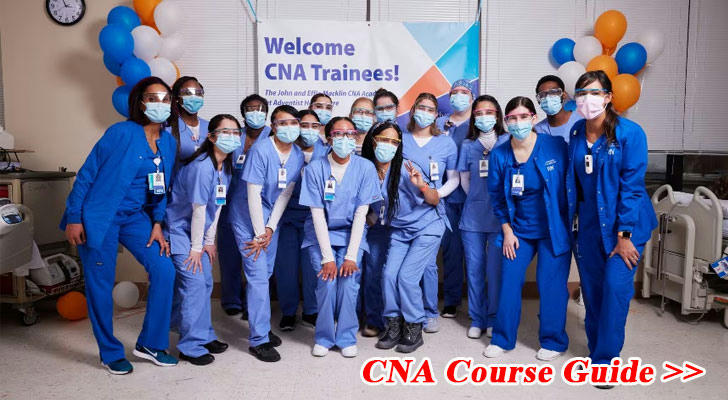✨How to study the CNA course in the United States through public resources at low cost?
📢 Becoming a CNA is easier than ever + Earn while you learn + Paid training

In the United States, Certified Nursing Assistant (CNA) is a crucial entry-level position in healthcare, with consistent high demand. For individuals looking to enter this field cost-effectively and seeking flexible online learning options, leveraging government resources is a key way to achieve low-cost training.
Advantages and Challenges of Online CNA Courses
Online CNA courses are popular for their flexibility, especially for learners who need to balance work, family, or other commitments. A core advantage is the ability to "learn while earning," with some training models even offering paid training opportunities. However, learners must also consider the challenges of online learning, such as self-motivation, technical requirements, and the arrangement of practical clinical hours. Many states mandate a specific number of clinical practice hours for CNA training, which typically must be completed in person.
Government Resources: Key Avenues for Low-Cost Training
The U.S. government, through various programs and agencies, provides financial support and resources to eligible individuals to reduce the cost of CNA training.
1. Workforce Innovation and Opportunity Act (WIOA)
The Workforce Innovation and Opportunity Act (WIOA) is a primary federal law providing funding for workforce development in the U.S. It aims to help job seekers acquire the skills needed for employment, including CNA training.
- How to Utilize: Applicants can contact their local American Job Centers. Staff at these centers assess eligibility (typically based on income levels, unemployment status, or specific group identification), and may offer:
- Training Vouchers or Grants: These can cover tuition, books, and other related expenses for most CNA certification programs.
- Career Guidance: Assistance with selecting appropriate training programs, resume and interview preparation, and job searching after training completion.
- Specific Program Examples: In many states, such as California's EDD (Employment Development Department) or Texas's Workforce Solutions, their American Job Centers manage WIOA funds. For instance, Workforce Solutions in Houston, Texas, might approve funding for hybrid CNA courses offered by Houston Community College (HCC), where theoretical components are online and clinical practice occurs at partner healthcare facilities.
- How to Find:
- Visit the U.S. Department of Labor's CareerOneStop website. In the "Find Training" section, enter your zip code or state to search for WIOA-approved CNA training programs.
- Contact your local American Job Center directly.
2. Community Colleges and Vocational Technical Schools
Community Colleges and Vocational/Technical Schools across the U.S. are major providers of CNA courses, and their tuition fees are generally much lower than four-year universities.
- Impact of Government Funding: These institutions commonly receive state and federal funding, allowing them to offer more affordable courses. Their CNA programs typically qualify for government funding programs like WIOA.
- Online Course Models: Many community colleges offer hybrid CNA programs where the theoretical portion is learned online, while clinical practice is completed in-person at healthcare facilities (like hospitals or nursing homes).
- Specific Program Examples:
- Valencia College in Florida offers CNA skills certification courses, with some theoretical content available online and practical components requiring on-campus or partner facility attendance.
- Dutchess Community College in New York also features similar hybrid CNA courses, providing students with the flexibility of online theoretical learning.
- How to Reduce Costs:
- Federal Student Aid (FAFSA): Complete the ** Application for Federal Student Aid (FAFSA)** to apply for like the Federal Pell Grant, as well as low-interest federal student loans.
- State Government Grants and Scholarships: State governments and in-state educational institutions often provide additional funding for vocational training programs.
- Institutional Scholarships: Many schools offer scholarships based on financial need or academic merit.
- Work-Study: Apply for work-study positions offered by the school to earn part-time income.
3. Employer-Sponsored Training Programs
Some healthcare facilities or nursing centers offer employer-sponsored CNA training programs to address CNA shortages.
- Paid Training and Employment Commitment: These programs typically pay trainees during the training period and guarantee a job placement upon completion of training and certification. This directly addresses the core needs of learning while earning and paid training.
- Specific Program Examples:
- Large nursing home chains like Genesis HealthCare and Kindred Healthcare, as well as some local hospitals or nursing homes (e.g., UPMC Senior Communities in Pennsylvania), frequently offer paid CNA training programs. Applicants typically commit to working for the institution for a certain period after training.
- How to Find: Applicants should directly check job postings at local hospitals, nursing homes, long-term care facilities, or home healthcare agencies. Many institutions post these integrated training and employment programs on their official websites or recruitment platforms. For example, search for "CNA training paid by employer" or "sponsored CNA program + [your city/state]."
The table below provides estimated average salary ranges for CNAs in the U.S. based on years of experience. These figures are approximate and for general reference only:
| Years of Experience | Estimated Average Hourly Wage Range | Estimated Average Annual Salary Range | Notes |
|---|---|---|---|
| 0 - 1 Year (Entry-Level) | $17.00 - $20.00 | $35,000 - $41,600 | CNAs who are recent graduates or have limited experience start at this foundational pay level. |
| 1 - 4 Years (Junior) | $18.50 - $22.00 | $38,500 - $45,700 | Having gained basic work experience, CNAs become more proficient in routine procedures and patient care. |
| 5 - 9 Years (Mid-Level) | $20.00 - $25.00 | $41,600 - $52,000 | Possessing solid experience and the ability to handle common issues independently, CNAs at this stage may begin to take on more responsibilities. |
| 10 - 19 Years (Senior) | $22.00 - $28.00 | $45,700 - $58,200 | Highly experienced, adept at various care scenarios, and may serve as mentors or lead CNAs within a team. |
| 20+ Years (Veteran/Expert) | $24.00 - $30.00+ | $49,900 - $62,400+ | Possessing deep professional knowledge and extensive practical experience, these CNAs may command higher pay in high-demand facilities or specialized areas. |
4. Job Corps
Job Corps is a federal program funded by the U.S. Department of Labor that provides housing, vocational training, education, and employment support for low-income youth aged 16 to 24, including healthcare training such as CNA.
- Advantages: Job Corps programs typically include housing, training, living allowances, healthcare, and job placement services, significantly reducing the cost of education.
- Specific Program Examples: Across Job Corps centers nationwide, such as the Woodland Job Corps Center in Maryland or the San Jose Job Corps Center in California, health occupations training is offered, covering CNA certification preparation.
- Duration: less than 12 weeks Occupational Skills certificate or credential.
- How to Apply: Visit the official Job Corps website (JobCorps.gov) or contact a local admissions office for more information on available healthcare training programs.
Conclusion
Accessing low-cost CNA online courses in the U.S. through government resources is entirely feasible. Applicants should proactively contact American Job Centers to explore WIOA funding, investigate online and hybrid courses at community colleges, seek out employer-sponsored paid training opportunities, and consider Job Corps or veteran benefits. These resources can not only substantially reduce training costs but also provide valuable career guidance and employment support, helping aspiring individuals successfully enter the thriving healthcare sector.

